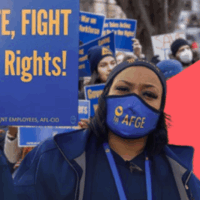Standing up for the lowest paid workers, this week congressional Democrats unveiled a key plank in their economic platform: a call for a $15 minimum wage from coast to coast by 2024. Spurred by growing concern about the future of America’s middle class, it marks the first time Democrats of all persuasions — progressives to moderates — have been united behind a call for strong action to reverse the economy’s tilt towards low-paying jobs.
Pay has fallen so far that nearly 4 in 10 of America’s workers today struggle on less than $31,200 a year — which is what $15 an hour translates to for a full-time worker. Far from teenagers, the 41 million U.S. workers who would get a raise under the Democrats’ proposal are overwhelmingly mid-career adults. The typical worker who would see a raise is a 36-year-old woman with some college level coursework who works full time but still struggles to pay the bills.
In fact, many of those eking out a living on less than $15 an hour are skilled workers in jobs that many of us think ought to lead to a stable, middle class life. They are pre-school teachers and nursing assistants; bank tellers and factory workers; home health aides and construction laborers.
While the movement for a $15 minimum wage started with 200 brave fast-food workers in New York City walking off their jobs, it has now spread nationally. And with good reason: cost of living analysis shows that in all 50 states, single workers will need to earn more than $15 an hour by 2024 just to afford basic housing, food, transportation and other costs. And those supporting families and those in more expensive regions will need even more.
Unlike past minimum wage proposals that have delivered important but modest boosts for a small group of workers at the very bottom, a $15 minimum wage, once it’s fully phased in, would raise pay by about $3,500 for almost 1 in 3 workers. That’s a tremendous difference for a child care provider or a security guard who today struggles on $20,000 a year or less — and would begin to reverse decades of widening pay inequality.
And what about the impact on businesses and the economy? Once phased in, a $15 minimum wage would boost paychecks nationwide by $144 billion a year. That’s money that workers will put right back into the economy, helping local businesses and spurring growth. Rigorous economic analysis by University of California economists of the $15 minimum wages that California and New York are now phasing in shows that the big boosts in consumer spending that they generate offset a substantial portion of the higher costs to businesses. Fast food snack chain Wetzel’s Pretzels reports that they’re already seeing this impact at their California locations: sales are up as the minimum wage phases in, offsetting their higher payroll costs.
That’s why business organizations representing tens of thousands of small businesses have backed a $15 minimum wage as beneficial for the economy and manageable for employers. These include both national business groups like the American Sustainable Business Council and the Main Street Alliance, and local organizations in states that are already phasing in $15 wages like the Brooklyn Chamber of Commerce, the Restaurant Association of Metropolitan Washington, and the Northeast Organic Farming Association — New York Chapter.
And growing numbers of individual employers are not waiting for Congress and raising their starting pay scales to $15 – everyone from major insurance companies raising pay to $15 for their claims processors, to Facebook guaranteeing $15 for their janitors and bus drivers, to hospital and nursing home chains in at least six states approving $15 wages for all their staff.
While the need for strong action on wages is urgent, President Trump and the Republican Congress are moving in the opposite direction: they’re trying to roll back worker protections against wage theft, health and safety dangers at the workplace, and threats to retirement security. That means that for the foreseeable future, states and cities will need to continue leading the fight for fair pay.
Fortunately, momentum in the states is only growing. Illinois and Minneapolis are moving to bring the Fight for $15 from the coasts to the Midwest. A half dozen states from Vermont to New Jersey to Hawaii are gearing up to pass $15 next year. And growing numbers of states are talking about following the lead of Colorado, Arizona, Maine and Washington State by putting the minimum wage on the ballot to sidestep corporate lobbyists and let the voters decide.
With their call for rebuilding the middle class with a $15 minimum wage — together with a progressive economic agenda that includes everything from paid leave to tackling the college debt crisis — and with the backing of the American people, progressives are taking their case to the halls of Congress.
When those 200 New York City cooks and cashiers walked off their jobs in 2012, people gave them no shot to win. With this week’s announcement, it’s clear Democrats of all stripes now understand $15 is what Americans everywhere need to support their families. It’s past time Republicans come to that realization, too.
This column was originally published on The Hill.




